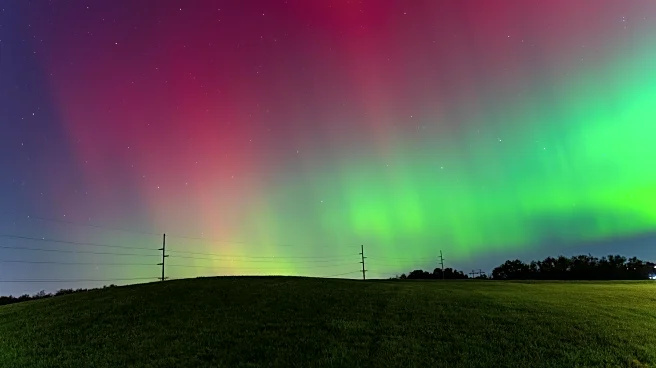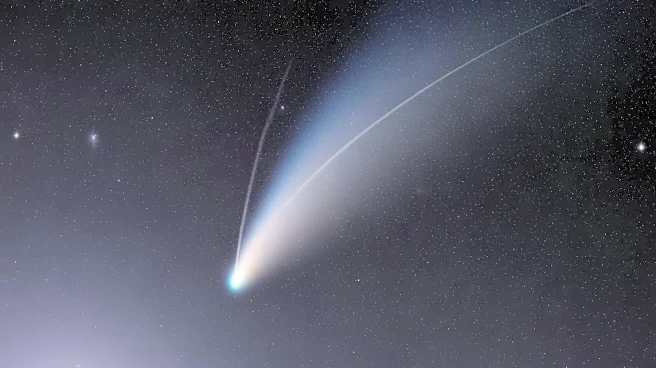What's Happening?
The National Oceanic and Atmospheric Administration (NOAA) has issued geomagnetic storm watches from November 11 to 13, 2025, due to multiple coronal mass ejections (CMEs) approaching Earth. The watches include a G2 (Moderate) storm on November 11, a G3
(Strong) storm on November 12, and a G1 (Minor) storm on November 13. These storms could result in enhanced auroras, intermittent high-frequency radio issues, and navigation disturbances. The South Atlantic Anomaly, a weak-field zone, continues to grow and evolve, posing risks to satellites and technology. Recent research highlights a reversal in the magnetosphere's electric polarity near the equator, affecting how scientists model space weather.
Why It's Important?
The geomagnetic storms could impact various sectors, including aviation, maritime, and utilities, due to potential disruptions in communication and navigation systems. Enhanced auroras may be visible in mid-latitude regions, offering a rare visual spectacle. The South Atlantic Anomaly's growth poses operational risks for satellites, increasing radiation exposure and potential electronic disruptions. Understanding these changes is crucial for improving space weather forecasting and mitigating risks to technology and infrastructure.
What's Next?
Stakeholders such as satellite operators, airlines, and utility companies will monitor the situation closely, adjusting operations as necessary to mitigate potential impacts. The scientific community will continue to study the South Atlantic Anomaly and the magnetosphere's polarity changes to refine models and forecasts. Public advisories may be issued to inform communities about potential aurora visibility and communication disruptions.
Beyond the Headlines
The ongoing changes in Earth's magnetic field, including the South Atlantic Anomaly and equatorial polarity reversal, highlight the dynamic nature of our planet's magnetosphere. These developments underscore the importance of continued research and monitoring to understand the long-term implications for technology, navigation, and climate.














